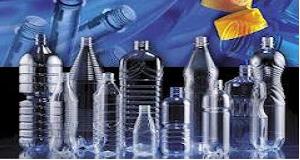Although there are fewer twin screw than
single screw extruders, they are widely
employed for manufacturing certain products,
in particular specialty operations such
as compounding applications. The popular
common twin screw extruders (in the
family of multiscrew extruders) include
tapered screws with at least one feed port
through a hopper, a discharge port to which a
die is attached, and process controls
such as temperature, pressure, screw rotation
(rpm), melt output rate, and so forth.
For all types of extruders if the goal is to
deliver a high quality melt at the end of the
screw, the plasticating or melting process
should be completed prior to reaching the
end of the screws. Twin intermeshing
counterrotating screws are principally used for
compounding. Different types have been
designed with basically three available
commercially that includes corotating and
counterrotating intermeshing twin screws;
nonintermeshing twin screws are offered only
with counterrotation. There are fully
intermeshing and partially intermeshing
systems and open- and closed-chamber
types. In the past major differences existed
between corotating or counterrotating;
today they work equally well in about 70% of
compounding applications, leaving
about 30% in which one machine may perform
dramatically better than the other.
Figure 3.27 shows the different designs used
with the twin screw extruders.
Similar to the single screw extruder, the
twin screw extruder, including the multiscrew,
has advantages and disadvantages. The type of
design to be used will depend
on performance requirements for a specific
material to produce a specific product.
With the multiscrews, very exact metered
feeding is necessary for certain materials;
otherwise output performance will vary. With
overfeeding, there is a possibility of
overloading the drive or bearings of the
machine, particularly with counterrotating
screw designs. For mixing and homogenizing
plastics, the absence of pressure flow is
usually a disadvantage. Disadvantages also include
their increased initial cost due to
their more complicated construction as well
as their maintenance and potential
difficulty
in heating


No comments:
Post a Comment